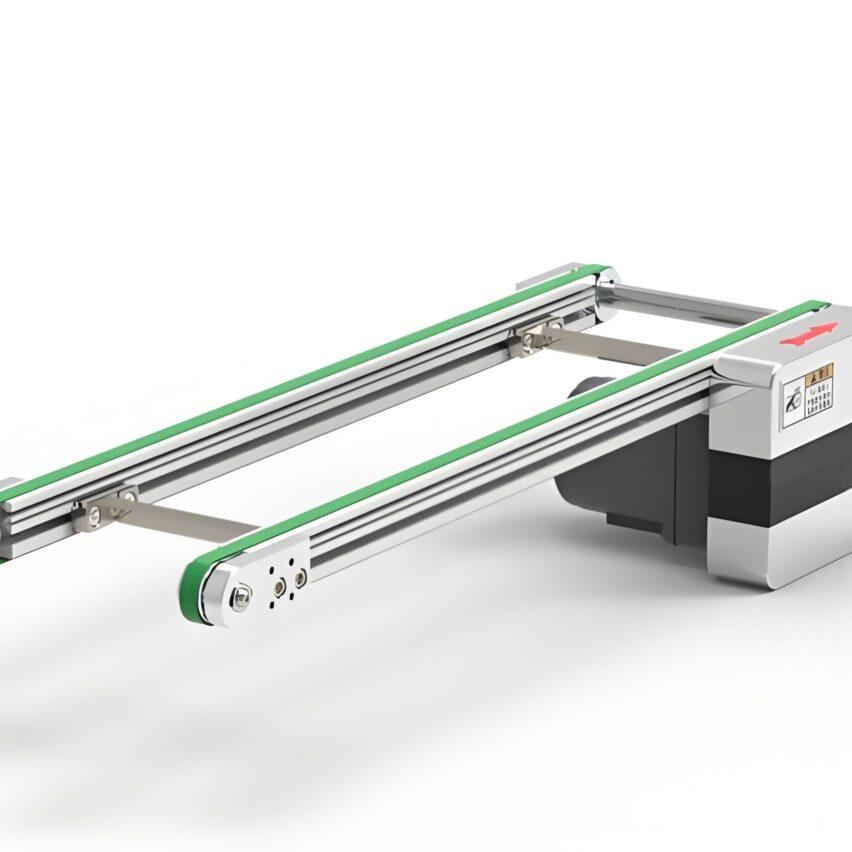Why is your conveyor always stuck at the corner? Choosing the wrong bandwidth material directly cuts the life of the equipment in half?
Newcomers to the selection of corner platform is most likely to plant in the bandwidth and material - looking at the parameter table confused, the results buy back either card box collapsed edge, or rust stains. Today we use the vernacular to dismantle the doorway of selection, to ensure that you avoid the pit of 90%.
First, the bandwidth is not selected correctly, the corner into a "blockage point".
Question 1: What exactly is bandwidth?
Don't let the technical terms fool you! Bandwidth is what the corner platform can handleMaximum width of cargo. For example, you often transport the carton width of 80cm, then the bandwidth must be at least 100cm (leave 20cm anti-running). Reference to a car factory case: they originally used 80cm bandwidth, the results of 1.2 metres long bumper always stuck, replaced with 150cm bandwidth after the rate of stuck goods directly to zero.
Question 2: How do I calculate how much bandwidth I need for my production line?
Remember the formula.Commonly used maximum cargo width + 20cm safety margin. Give me a chestnut:
- E-commerce small pieces: carton usually <60cm → choose 80cm bandwidth
- Industrial large pieces: pallet approx. 1.2 m → choose 140 cm bandwidth
Note: If the goods are of different lengths (e.g. wooden planks), to press theMaximum sizeCounting.
Second, the wrong choice of material, three years on the scrapping
Question 3: Is stainless steel really more durable than carbon steel?
A direct comparison table is more intuitive:
| material (that sth is made of) | Applicable Scenarios | life span | (manufacturing, production etc) costs | Achilles' heel |
|---|---|---|---|---|
| carbon steel | Drying workshop | 3-5 years | $10,000/unit | Rust when humidity >70% |
| Stainless steel 304 | Food/chemical plants | 8-10 years | $13,000/unit | Fear of hydrochloric acid corrosion |
| aluminium | electronic clean room | 6-8 years | 15,000 yuan/unit | Load capacity ≤500kg |
A condiment factory's blood lesson: with carbon steel corner platform, soy sauce steam three months on the corrosion of the roller bearings, replaced by stainless steel to solve.
Question 4: How to choose materials for special environments?
- freezer compartment(-25°C): must be usedLow Temperature Stainless SteelOrdinary steel will brittle and fracture.
- Plating workshop:: SelectionEngineering plastic covered rollersAcid and alkali corrosion-resistant
- Heavy duty workshopCarbon steel base + stainless steel contact surface, save money and carry the construction.
Third, drive the wrong way to choose, double the cost of electricity and downtime
Question 5: What is the difference between a cylinder drive and a servo motor?
- Cylinder driveCheap and sturdy, the action "clunk" is crisp and clean, suitable for slow-paced production line (interval > 10 seconds). But the gas consumption is large - a furniture factory installed 8 sets of cylinders corner platform, air compressor electricity costs more than 3,000 yuan per month.
- servo motorIt is expensive but accurate, with a corner error of <0.5°, suitable for precision electronic parts. A mobile phone screen factory changed servo drive, glass substrate breakage rate from 5% to 0.3%.
Question 6: Should I go to variable speed control?
Look at these three points to understand:
✅ Inconsistent front and rear assembly line speeds (e.g., 3 m/s at the front end, 1.5 m/s at the rear end)
✅ Large fluctuations in cargo weight (lightest 1kg vs. heaviest 50kg)
✅ Requires frequent starts and stops (>60 actions per hour)
Chemical raw material tank loading line of the actual test: on the frequency converter, tank positioning accuracy from ± 5cm to ± 1cm.
IV. A guide to avoiding the pit: the disaster scene of choosing the wrong parameters
Question 7: What happens if I buy a smaller bandwidth?
▶️ Scratch guards on the edges of the case → guide wheels have to be changed in six months
▶️ Goods crammed in the corner area → back-end equipment idling waiting for material
An express sorting centre mined fact sheet: to save money to choose a narrow bandwidth, the results of the double eleven parcels stuck into the "stacked", it took 2 hours to clear the goods.
Question 8: What are the consequences of choosing the wrong drive method?
- Cylinder with heavy load: Lifting speeds like a sloth, production line efficiency cuts down.
- Servo with light load: Kill the chicken with a bull's-eye, equipment costs go up by 30,000 for nothing
Referring to the solution of the auto parts factory: hydraulic drive for castings over 200kg and cylinder for plastic parts under 50kg, the cost was saved 170,000 RMB.
V. Three Steps to Ultimate Selection
Question 9: How do I quickly lock the configuration?
In three steps:
- measure sb's height: Take out a tape measure to measure the widest/heaviest goods
- look at the environment: Is the workshop damp? Are there any corrosive gases?
- keep rhythm: How many angular revolutions per minute? How many millimetres of error are allowed?
Question 10: Where do I find a reliable supplier?
▶️ Look at the patents: there are noPatent for guided anti-bias structure(e.g. lift table with auxiliary rollers)
▶️ To Case: Video Verification of Successful Cases in the Same Industry
▶️ Load Measurement: On-site testing of maximum loads with sandbags
Editor's view
Corner platform is not the more expensive the better. E-commerce small parts with carbon steel + cylinder enough to save enough money to buy two sweep guns; but the food factory hard on carbon steel, the light rust removal labour costs can buy another set of stainless steel equipment. Remember the three words.Cylinders for light goods, hydraulics for heavy goods, stainless steel for wet environments.. Bring a bottle of mineral water to pour over a sample of the material next time you inspect it - the ones that don't rust in 5 minutes are the ones that really work.













